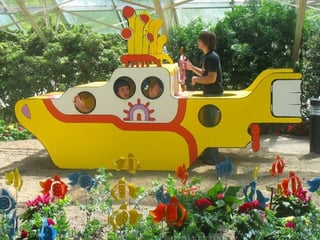As I ponder all the things I need to teach my kids: how to properly brush teeth, how to care for plants and animals, how to spell, and appropriate ways to communicate; I also realized that I have to teach them critical thinking. It might not come to them naturally. It can be a learned behavior.
One important tool we use for standardized communication when presenting a problem in our job field of medicine is called SBAR.
This method originated in the US Navy for submariners. This can be a stressful environment and important information needs to be conveyed to the captain so that he can make a quick decision. The nuclear physicist or other personnel would go to the Captain with this important information so that a quick action could avert disaster.
S - Situation
B - Background Information
A - Assessment
R - Recommendation
We are beginning to teach our staff and kids, that instead of just presenting a problem to us, and then waiting for us to draw out all the important information to make a decision; to instead offer the question in this format. This allows the child to think about the whole situation before coming to the parent. This would be especially helpful for preteens, and teens.
For example: 17 year old with drivers license:
S - There is a school dance on May 10th at 8pm
B - I finished my homework, washed the car, and my 2 best friends are also going
A - I know there will be plenty of chaperones at the dance and I think it would benefit my social life and dancing skills if I could attend. It would be a safe environment.
R - I would recommend: use of the car to go to the dance, call you when I arrive, and that I be home by 1030pm, providing that I drive only myself
If you heard your child ask in this format, you might be more inclined to say yes, than if they just offered an open-ended question "can I go to the dance?" Let the grilling begin.
We use this format often between nurses and physicians in the medical setting. The nurse will call the doctor from the field and provide all this information. This exchange of information forms an expectation for each party. Both parties know what will be included in this conversation. I know when a nurse calls my husband and is doing a good job, because he will answer the phone, and then not speak for quite a while. He doesn't ask a lot of questions. If the nurse has done a good job, he will say " I agree with your recommendation." This puts to use the nurses critical thinking skills. They are in the field with all the pertinent information, and know the most about the case. They are calling for approval of their recommendation instead of calling to present a problem, without offering all the surrounding data.
We need to recognize the expertise of the people we work with. We need to recognize that our children can examine the whole situation and offer a realistic assessment and recommendation that we can also approve of. Once they are required to go through this format, they won't be leaving out the pertinent details and leave us to grill them. Grilling makes everyone uncomfortable.
Another level of critical thinking is to examine a situation, or photo, and ask what all the possibilities are.
"What do you think happened in this photo?" Come up with all the possibilities. Then sort out which are the most likely possibilities.
This can also be true for an overheard comment. "Why do you think she said that?" Come up with all the possibilities.
This is a good exercise that will help children to avoid jumping to their first conclusion.
Just recently I took the children to get ice cream. No matter how much I smiled at the man serving us, or how polite I was, he was gruff, and unhappy. It would have been easy to jump to conclusions about his personality. Instead, I thought about all the possibilities. Maybe he had family in the Boston Marathon bombing. Maybe he had physical ailments, or financial hardships. Maybe he had just received disturbing news. No matter what the reason, this type of thinking can lead to empathy.
When we hear something on the news, or hear about a study that has been conducted, we need to look at it critically. We need to teach our children how to examine this new evidence by asking the following questions.
1. Who did the study? Who is conducting the investigation?
2. What was their motivation to do this study?
3. What other questions would you want to ask about this study?
4. What did they neglect to mention?
5. Was this study conducted for a long enough period of time? How could the study be improved if it were conducted over a longer period of time?
6. Is the claim truly scientific evidence, or is it more of an observation by those who have something to gain by this claim?
My children have already come home claiming many things that they have been indoctrinated with at school. These are things that they do not fully understand. These are things that were not fully explained to them. My children have exclaimed, "We should not cut down any trees!"
I explain that we use wood from trees for many wonderful purposes that God has intended for us. I go through all the items that we can think of that are made from wood. Asking the children to participate will give them real fuel for the next time this comes up at school. "Pianos, baseball bats, houses, boats, pencils, coffins, furniture, violins, are all made from wood." I teach them the difference between abuse, and greed, and the justifiable use of the natural resources of this beautiful world.
These are just a few the ideas we have come up with as parents for our three children. We hope this will help their minds to expand, and aid their confidence in presenting to authority figures. With a critical mind, they will not as easily fall prey to those who are trying to deceive them, will explore the reasons for and against activities, and will avoid jumping to conclusions that will hurt others. Streamlining with the SBAR format can really enhance any work environment, or fast paced family life.
Copyright 2013 Marya Jauregui
About the Author

Marya Hayes
Marya Hayes is mother to 3 active teens and is a military spouse. Her days consist of running the household and her mini business, and driving her teens daily all over the planet. Her favorite saints include St Francis de Sales, Saint Benedict, Padre Pio, and JPII. Marya enjoys cooking, hiking, and spending time with the family outdoors. Pray, hope, and don’t worry!



.png?width=1806&height=731&name=CatholicMom_hcfm_logo1_pos_871c_2728c%20(002).png)
Comments